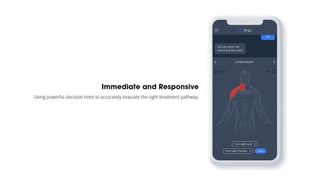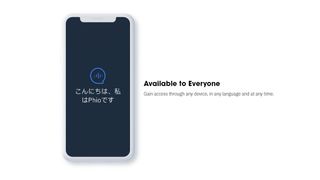Democratizing healthcare through telemedicine: a Q&A with EQL
Using state of the art technologies to deliver accessible, affordable healthcare

Visiting a doctor can sometimes be difficult and this is especially true for patients recovering from injuries which require additional treatment. In today's connected world however, many hospitals and clinics have begun to offer telemedicine software through user's computers or smartphones that allow doctors to virtually visit a patient. These services are convenient and can help those suffering from common ailments such as a cold.
The London-based startup EQL is taking telemedicine a step further by specializing in physiotherapy and TechRadar Pro spoke with its CMO and co-founder Pete Grinbergs to learn more about its recently launched app Phio.
- Amazon acquires telemedicine startup Health Navigator
- How 5G is set to revolutionize healthcare
- Google signs huge healthtech cloud deal
Can you tell us a bit more about EQL and your goal to deliver accessible, affordable healthcare using state of the art technologies?
Accessing healthcare can be costly, time consuming and cumbersome. It often involves numerous appointments, filling in duplicate forms and repeated questioning about your clinical history. The net effect can result in delays to accessing the right treatment and makes for a bad user experience. EQL is intent on disrupting this overly manual process by providing technology solutions that quickly assess patients’ needs through state of the art patient focused user interfaces that allow the user to take control of their healthcare needs.

Your company launched its AI-driven physiotherapy assessment tool Phio earlier this year. How was the initial reception and how has it helped patients so far?
We have seen significant interest both domestically and internationally from medical insurers, conventional physiotherapy providers, occupational healthcare companies and the NHS. Patients see it as a fast and convenient way of accessing physiotherapy services without the need to first speak with their GP or undertake telephone assessments with their healthcare provider. Because Phio is entirely digital and accessible at any time of day, patients are able to have their healthcare needs assessed in any location and at a time that is suitable and convenient to them.
One of Phio’s biggest selling points is that it is accessible on any device. Does this mean the app is tailored to work with older versions of Android and iOS?
We were keen to make Phio accessible to everyone, so we took time to produce a platform that carries a high degree of compatibility. We are using the very latest cross platform technology to ensure both a great UI and an experience that is personable to the user. The platform is tested back as far as can be reasonably expected. You tend to find that very old operating systems become unsupported by the developers who built them meaning they don't benefit from the latest security updates, amongst other features. We always advise users to run the very latest operating system, although Phio will ultimately support whatever versions Google and Apple support through Google Play or the Apps Store.

Was it difficult to have Phio support different languages and are there any languages that are not yet supported?
Part of the beauty of being part of the Google Cloud for Start-ups Program is that we get access to some of the latest GCP products. One of them is a machine learning tool that is capable of translating into any language. Twenty of the most popular languages can to be accessed straight away, although with a bit of time it is possible to translate into any language. The benefit of using an ML based tool is that subtleties and nuances of language are not lost in translation (literally!). As a final check, and because we are dealing with medical terminology, we always deploy a final manual check of any translation with a native speaking translator.
The UI for Phio is sold as a major differentiator - did you intentionally design it to be accessible for patients of all ages and technological backgrounds?
The adoption of digital technology is growing rapidly, especially within some of the older generations and we were keen to make our solution as user friendly and self-explanatory as possible. Because we use conversational AI the flow is very human-like so it should just feel like you are talking with another person. Normal conversations usually require no explanation so that’s the angle we wanted to go down. If we found ourselves over explaining something, we thought of another way of doing it so that it was easier to understand.

How have patients responded to your use of augmented reality in order to encourage them to exercise more?
We have a number of technologies we are looking to implement when it comes to behavioural change and motivation. The use of AR is one such technology where we feel there is scope to develop solutions that encourage and promote healthy living. User feedback has been positive although we never throw all our eggs into one basket when developing features. The beauty of Phio is that we get to A/B test various features against different user groups and personas. This allows us to develop a broad spectrum of features that target users in a very precise and meaningful way. This coupled with our interactive UI makes for a very personal experience and one that is constantly evolving.
What’s next for Phio and do you plan on branching out into other medical areas besides physiotherapy?
We created the tech stack to enable this product to have applications across a number of healthcare areas. Wherever there is a manual collection of data and when we are looking to use this address to medical conditions which will benefit from behavioural change we can provide real value. This will help drive our future direction.
- Also check out the best telemedicine software of 2019
Are you a pro? Subscribe to our newsletter
Sign up to the TechRadar Pro newsletter to get all the top news, opinion, features and guidance your business needs to succeed!
